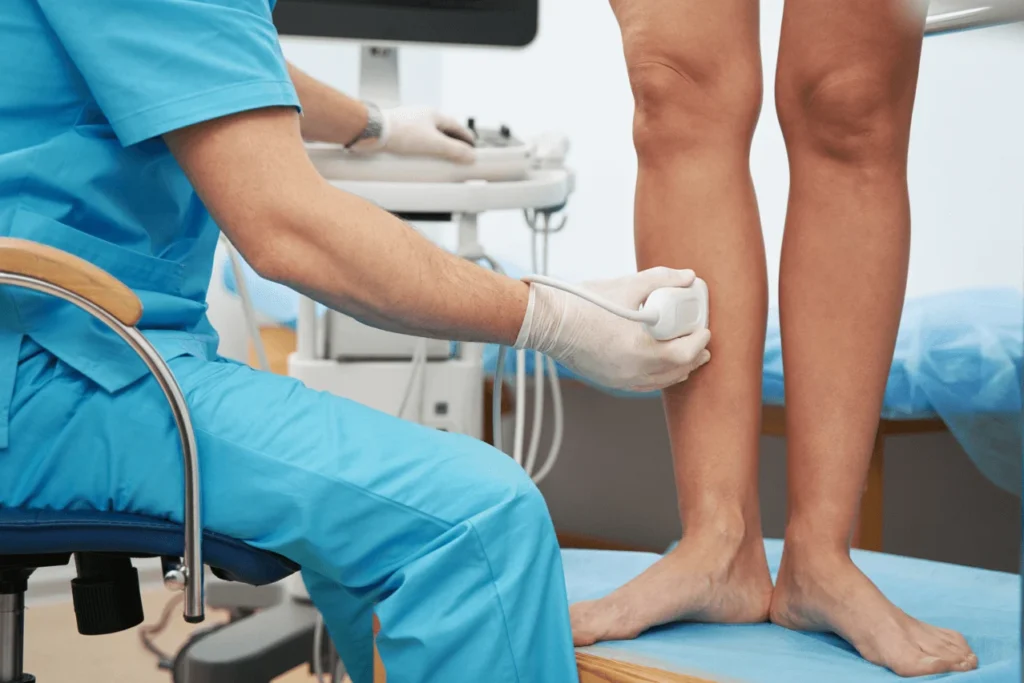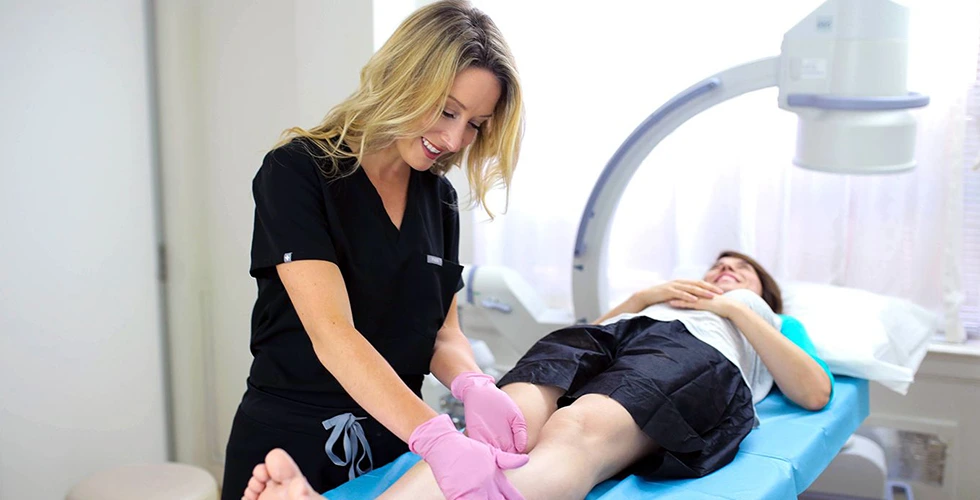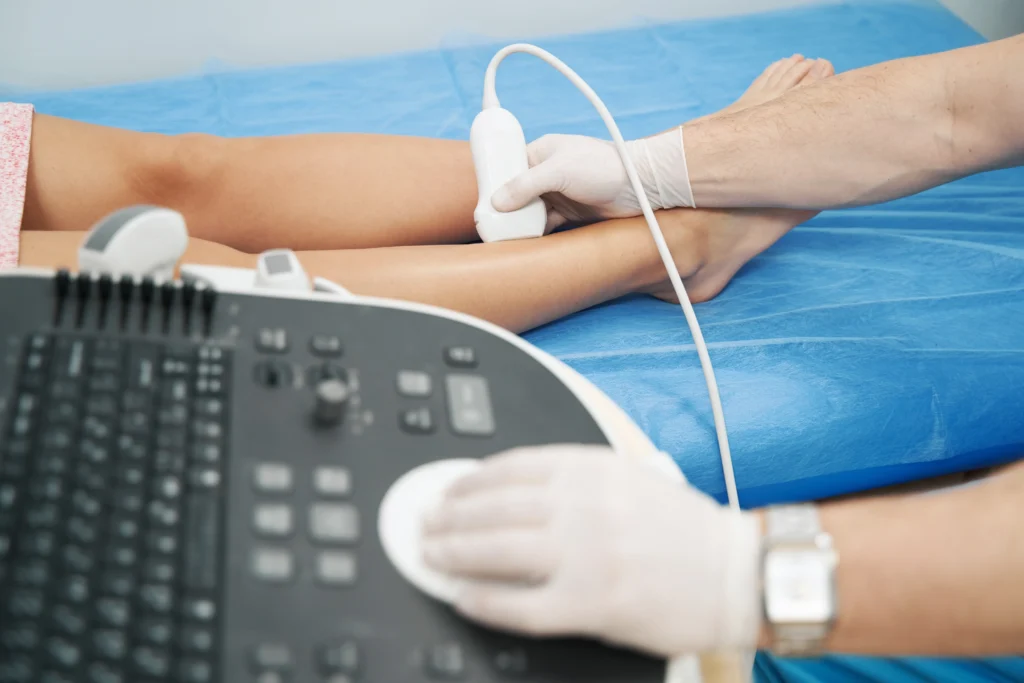Varicose veins and spider veins are common conditions that affect many people, especially those who spend a lot of time sitting or standing. While these conditions are often harmless, they can sometimes be a sign of an underlying issue. At Maryland Vein Clinic, we specialize in minimally invasive treatments for varicose veins and spider veins. In this article, we’ll discuss the red flags for varicose veins and when you should seek treatment.
Understanding Varicose Veins and Spider Veins
Varicose veins are enlarged veins that usually appear on the legs and feet. These veins are caused by weakened valves that allow blood to flow back into the vein and pool. Spider veins, on the other hand, are smaller and usually appear on the face, legs, and feet. Both varicose veins and spider veins can be unsightly, and they can be a sign of an underlying issue.
Both varicose veins and spider veins are symptoms of chronic venous insufficiency, a condition where the veins in the legs cannot efficiently return blood to the heart. Chronic venous insufficiency occurs when the valves in the veins that help blood flow towards the heart become damaged or weakened. As a result, blood may flow backward and pool in the veins, leading to varicose and spider veins.
If left untreated, chronic venous insufficiency can lead to more serious health issues. In addition to causing discomfort and swelling, the condition can also lead to skin changes, such as thickening and discoloration, and skin ulcers. These ulcers can be difficult to treat and may require specialized wound care. That’s why treatment is essential.

Risk Factors for Varicose Veins and Spider Veins
There are several risk factors that increase your chances of developing varicose veins and spider veins. These include:
- Age: As you get older, your veins lose elasticity, which can cause them to stretch and become weaker.
- Gender: Women are more likely to develop varicose veins and spider veins than men.
- Genetics: If your parents or grandparents had varicose veins or spider veins, you are more likely to develop them.
- Pregnancy: Pregnancy puts extra pressure on your veins, which can cause them to enlarge.
- Obesity: Excess weight can put extra pressure on your veins and increase your risk of developing varicose veins and spider veins.
Red Flags for Varicose Veins
While varicose veins and spider veins are sometimes harmless, there are several red flags that you should look out for. If you experience any of these symptoms, you should seek treatment:
- Pain and Discomfort: Varicose veins and spider veins can cause pain and discomfort, which can be a sign of an underlying issue. The pain is usually described as a dull ache, heaviness, or throbbing sensation in the legs. It can be worse after standing or sitting for long periods of time. Cramping may also occur, particularly at night. This discomfort is caused by the pooling of blood in the veins, which causes increased pressure in the affected area.
- Swelling: Swelling in the legs and feet is a common symptom of varicose veins and spider veins. This swelling, also known as edema, is caused by the blood pooling in the veins and not being efficiently returned to the heart. The swelling may be more pronounced at the end of the day or after prolonged standing or sitting. In severe cases, the swelling can become so severe that it causes pain and difficulty walking.
- Skin Changes: Varicose veins and spider veins can cause skin changes, such as darkening, thickening, and discoloration of the skin. This occurs because the pressure in the veins causes the blood to leak into the surrounding tissues, leading to inflammation and damage to the skin. This skin damage can lead to the development of an itchy rash or eczema, which can be difficult to treat.
- Ulcers: In severe cases, varicose and spider veins can cause the development of leg ulcers. These are open sores that develop on the skin, usually around the ankle. Leg ulcers can be painful and can take a long time to heal. They are caused by the long-term buildup of fluid and pressure in the affected area, which causes damage to the skin and underlying tissues.
- Bleeding: Varicose veins can cause bleeding, particularly if they are close to the surface of the skin. The bleeding may be minor, but it can be alarming. The bleeding occurs because the pressure in the veins causes the blood vessels to become more fragile and prone to rupture. This bleeding can be difficult to control and may require medical attention.
Improving Circulation and Preventing Varicose Veins
While some risk factors for varicose veins are unavoidable, there are steps you can take to improve your circulation and prevent varicose veins. Here are some tips:
- Move around: Sitting or standing for long periods can cause blood to pool in your legs, which can increase your risk of developing varicose veins. To improve circulation, make sure you take breaks and move around every 30 minutes or so. If you have a desk job, try standing up and stretching your legs or taking a short walk around the office.
- Exercise regularly: Exercise can help improve circulation and strengthen your veins. Aim to exercise for at least 30 minutes a day, five days a week. Walking, running, cycling, and swimming are all great forms of exercise that can help prevent varicose veins.
- Wear compression stockings: Compression stockings can help improve circulation and prevent varicose veins. These stockings are designed to provide pressure to your legs, which helps to keep blood flowing properly.
- Elevate your legs: If you spend a lot of time sitting or standing, try elevating your legs whenever possible. This can help reduce swelling and improve circulation. You can prop your legs up on a stool or chair, or lie down with your legs elevated on a pillow.
- Maintain a healthy weight: Excess weight can put extra pressure on your veins and increase your risk of developing varicose veins. To maintain a healthy weight, eat a balanced diet that is rich in fruits, vegetables, and lean proteins. Limit your intake of processed foods, sugary drinks, and snacks.
Varicose veins and spider veins are common conditions that affect many people, especially those who spend a lot of time sitting or standing. While these conditions are usually harmless, they can sometimes be a sign of an underlying issue. If you are experiencing any of the red flags for varicose veins, such as pain, swelling, skin changes, ulcers, or bleeding, you should seek treatment.
At Maryland Vein Clinic, we offer minimally invasive treatments for varicose veins and spider veins. Our clinics are located in Silver Spring, Maryland, just outside of Washington, DC. Contact us today to schedule a consultation with our board-certified vein doctors and learn more about our services.
Don’t ignore your symptoms.
At Vein Treatment Clinic, we’re here for Maryland patients with expert vein doctors and convenient locations close to home.
Whether you’re in Bethesda, Bowie, or Maple Lawn, you’ll find advanced care for spider veins, varicose veins, and chronic venous insufficiency at our clinics.
Patients across Maryland trust our Ivy League–trained, board-certified specialists for minimally invasive treatments that improve circulation, relieve pain, and restore confidence. In Maryland, our team includes Dr. Kamran Saraf and Dr. Lisa Alford, two highly experienced vein experts dedicated to providing personalized care.
Book your consultation today at the clinic nearest you.





